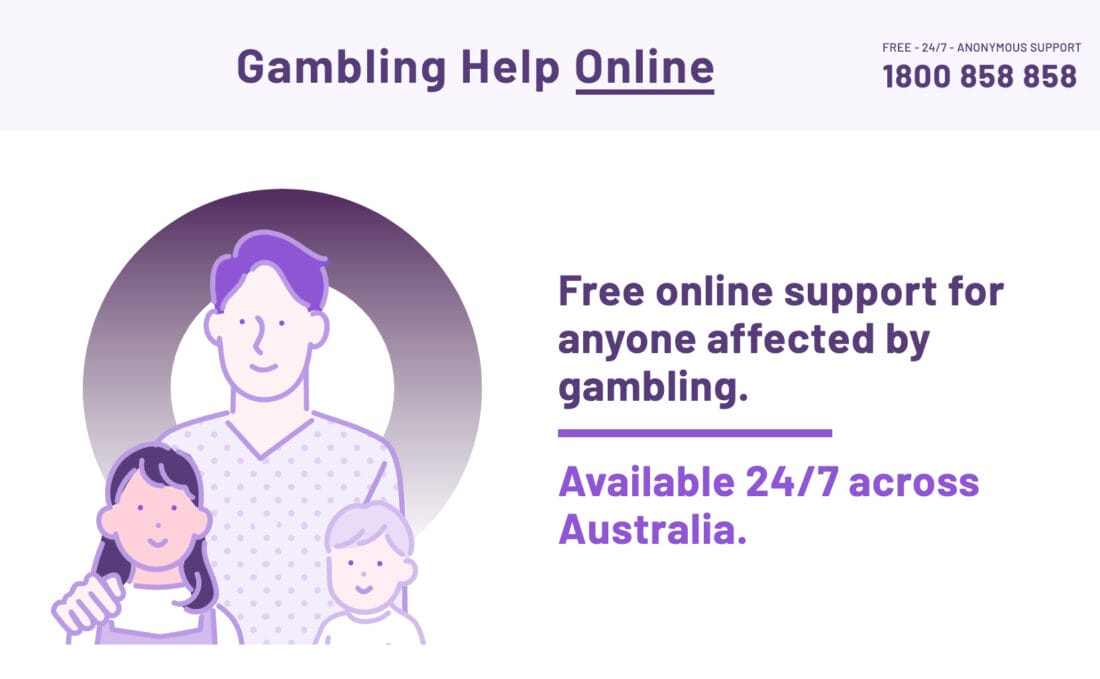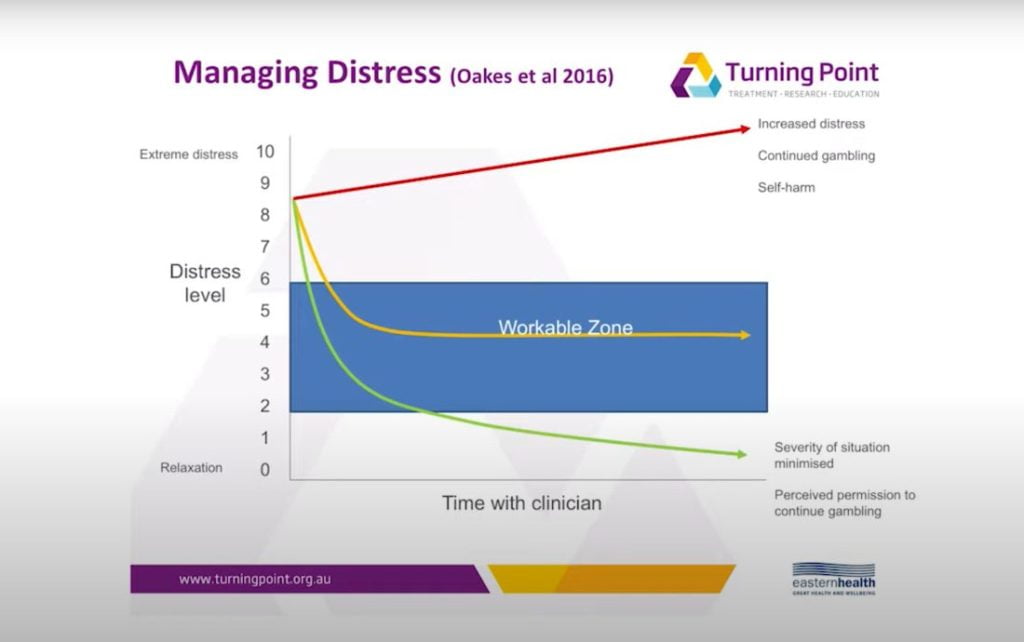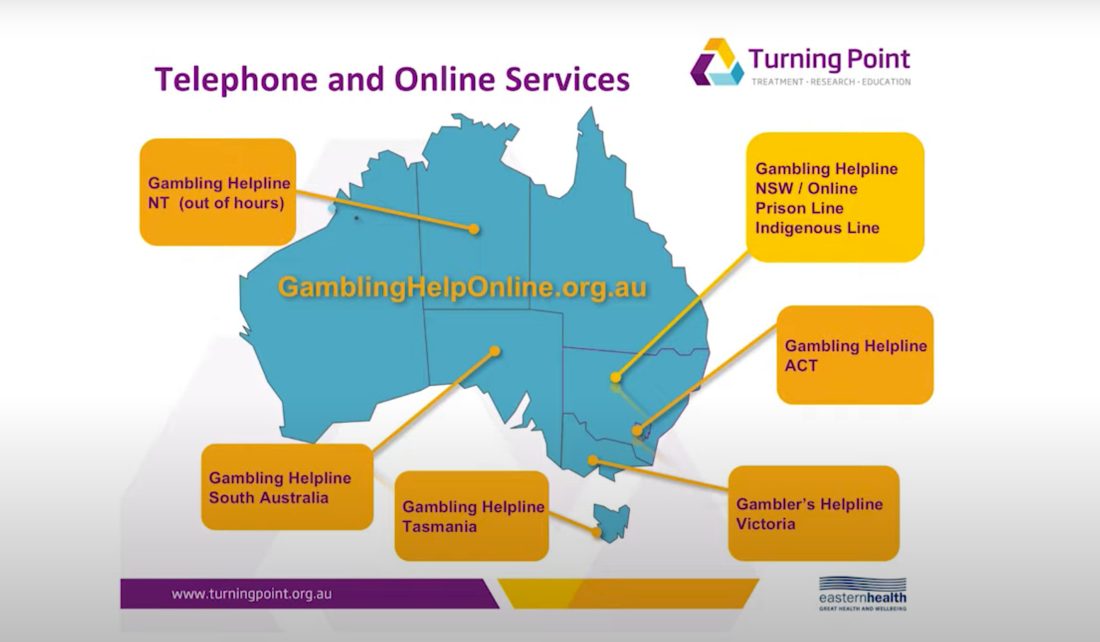Turning Point Addiction Treatment organization
Professor Dan Litman is the team leader. He’s one of the experts in addiction therapy and how to stop gambling. We also have Dr. Matthew Frye. He’s an addiction specialist.
Dr. Kitty Vivekananda manages all the programs at the floor level. Jane Oats is one of the coordinators, and the team has shift supervisors who supervise the counselors on the floor. If there are any issues or they’d like to debrief a call.
The counselors are well-supported. They have a systems team available 24 hours a day to manage any problems we might have with the telephone or online systems. They have an admin team and about 70 counselors who work 24-hour shifts managing the lines. The Australian hotline number is 1800 858 858.
About the gambling hotline
There are different helplines. Turning Point manages the New South Wales Gambling Helpline to give you an overview. They also have a particular online program where they share real stories and blogs they write each month. There is also a prison hotline for New South Wales, where prisoners are allowed a ten-minute call from inside the prison to talk about their gambling issues.
In New South Wales, there is an Indigenous gambling hotline specific for Indigenous clients. The counselors trained in managing Indigenous callers, the gambling helpline in the ACT and Tasmania, South Australia, and some out-of-hours work in the Northern Territory.
Turning Point also looks after the National Online Gambling Helpline. The counselors take calls from alcohol, drug, and drug diversion programs besides gambling. According to gambling addiction statistics, 96% of gambling addicts also meet the criteria for another disorder. You can find a full list of hotline numbers here.

Why some callers don’t accept a referral
Many people with gambling problems don’t seek help, and when they seek help, they’re reluctant and sometimes reluctant to go on to have further gambling help. The primary goal of the counselors in the program and the model of care is to make sure that the clients go through and have a referral for ongoing help. The helpline spends a lot of time doing that.
The main reasons why people don’t want a referral:
- They are already in treatment
- Only calling to seek information
- Not ready to stop gambling yet
- Seeking self-help tools rather than gambling counseling
- They hang up or drop the call
- Referred to a non-gambling helpline
- The person didn’t have time to get help
- There was no suitable option for the caller.
They might be in gambling treatment already. Many people call about a significant other with someone else gambling. The counselor encourages the significant others to go on and engage in ongoing help because affected others also need support to manage the situation when they have a person who has gambling problems.
Sometimes, people seek information only. They’re prey, contemplative, or ambivalent. The problem gambler isn’t quite sure. That’s where the model of care is helpful: to help people work through that ambivalence and take the next step.
Some callers only want self-help tools. They want to try it themselves, particularly on the online program. Stigma and shame around gambling addiction is a particular issue that stops people from seeking help to quit gambling. Sometimes, people are just dipping their toes in the water when they call the problem gambling hotline, which takes a lot of courage.
The hotline staff try to make the most of that one-time contact, even if someone only wants a self-help tool. The problem gambler is encouraged to try other support, too. Sometimes, the caller drops out.
In rare cases, the caller is referred to a non-gambling help service. Maybe they’re in crisis, and they need immediate crisis help. If that’s the case, it’s better for the most immediate problem. Another reason is that they don’t have time for gambling treatment or to continue the call. They’re just calling quickly when no one’s around, and then they hang up because someone comes back, and we cannot access a referral agency.
Last, it can be that they can’t make it to treatment or that there are no available options in their area. There are quite a few reasons why people aren’t ready to stop gambling, and the Model of Care tries to address all of those.
What does the gambling helpline do?
The gambling addiction hotline is based on the Model of Care. The model of care provides a foundation to supervise the counselors. All counselors have regular supervision by one of the senior staff. The model has six phases:
- Engagement processes and establishing Rapport
- Brief Assessment – Understand the situation
- Giving information, clarifying, and Psychoeducation
- Brief intervention
- Viable next steps
- Closure
The first step is engagement. Engaging with the client is important because it takes a lot of courage for them to call. The counselor takes time to be interested and respond to the client’s expectations and goals. If someone calls, the person answering tries to determine what’s happening to the caller. After the clients discuss what they want to discuss, the counselor will reflect on the call’s purpose and perhaps speak about bearing, spend some time discussing problem gambling, and perhaps opportunities for ongoing help. The counselor demonstrates to the client to address what the client struggles with and wants to talk about.
The second step is to build an understanding of the client’s situation. It’s not about doing a confessional from the client. Because talking a lot about gambling harm could induce more distress, it’s tough for them to think clearly and engage in appropriate help that suits them. It is better to avoid making them more upset. The focus is to find out what they are about today. They probably had an idea to call for a while, and gambling’s been a problem for some time. But for some reason, they decided to call today. So it’s important to understand why they did it today.
What was the light bulb moment for the client that made him call today?
We need to know just a little bit about their support and just a bit of history to understand what life is like for them.
The third step is about improving the client’s awareness of problem gambling. The goal is to give the caller a little education and then talk about harm minimization methods so they can reduce the harm.
All the counselors are trained in motivational interviewing and brief techniques. They aren’t counseling the caller. The process of the model of care is to get them to a counselor. The fourth step is a brief intervention to increase their motivation for ongoing gambling help. During the call, they spent time with various motivational interviewing exercises.
The fifth step is the next action. Ensuring the next step fits the client is important because sometimes it’s not the right step. They’re less likely to go if it isn’t a good fit. Here are some questions that could be asked:
- Are they ready for face-to-face counseling?
- Is there a way we can get them more prepared?
- Do they live in the right area?
- Can they afford to get counseling?
There are lots to take into consideration.
At the end of the session, in the last step. The hotline staff ensures it has understood what the client wants. Together, they discussed problem gambling and gave information about the next steps. Last question: Is there anything else you want to discuss today? It ensures the clients get what they want out of the call and feel confident to go on and have further help.
Background of the Care Model
The Care model is developed at the gambling helpline. It was created by Jane Oates and some of her colleagues. They found that when someone calls up in distress, the hotline staff asks questions like:
- What’s going on?
- How much have you lost?
- How long has it been going for?
If they asked a distressed client all those troubling questions, it would only make them more distressed and disengaged.

The hotline staff found that when a client becomes too upset, it could make them think more about gambling and how it could “solve” their financial situation. The team didn’t want that to add to the distress. However, what they also don’t want to do is reassure them that everything’s going to be okay.
If the gambling hotline staff decreases the problem to make the person less distressed, there is a risk that the person will start thinking that gambling is okay.
Instead, the care model wants to inspire clients to reflect on their behavior as a problem. The model isn’t about escalating the problem but about getting the client to start reflecting and talking to them.
What’s gambling been like for you? It’s a problem, so they can say it is. The key is to do some self-observation and self-learning. Understanding that they have a problem helps them realize that they need help.
